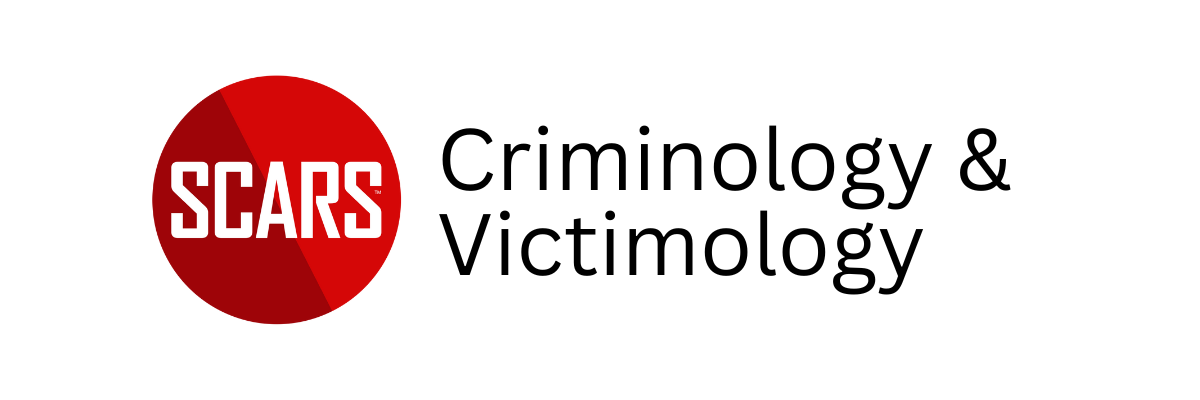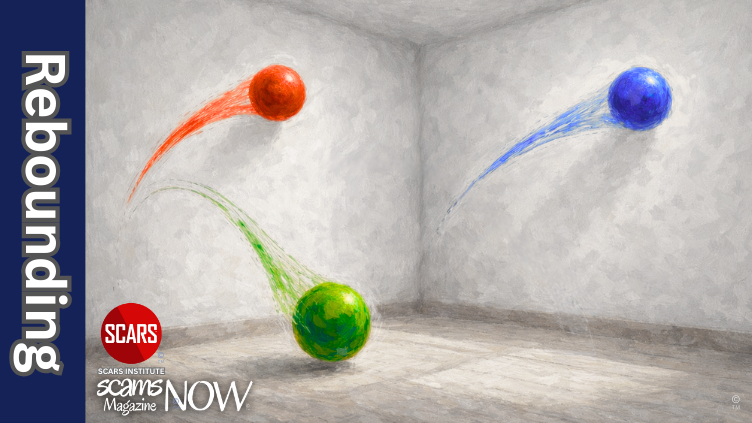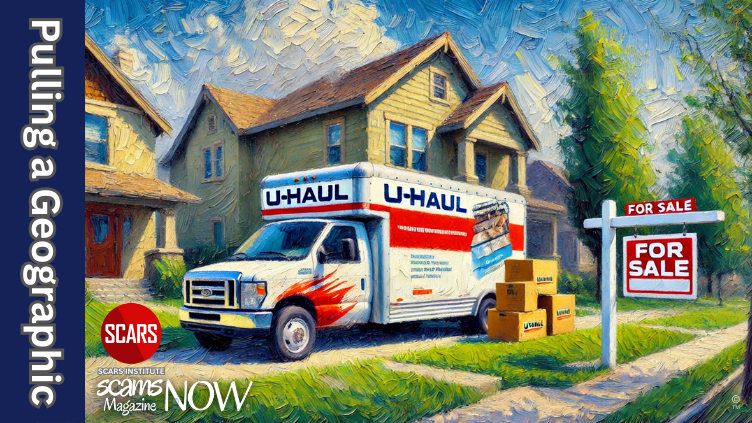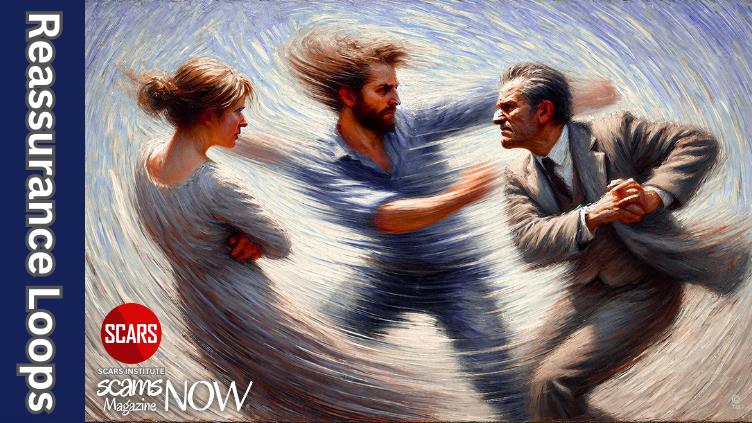
Cultural Selection Theory or Cultural Evolution and the Dangers of Unending Financial Fraud and Scams!
Understanding How Our Civilization Evolved the Online Scammer
Primary Category: Criminology // Anthropology
Author:
• Tim McGuinness, Ph.D., DFin, MCPO, MAnth – Anthropologist, Scientist, Polymath, Director of the Society of Citizens Against Relationship Scams Inc.
About This Article
The theory of civilizations involving the Preservative Force and the Innovative Force highlights the importance of both stability and change in the development and sustainability of societies. The ongoing interaction between these forces drives cultural evolution, influencing how civilizations rise, adapt, and sometimes fall. Understanding this dynamic can provide valuable insights into the challenges and opportunities faced by contemporary and future societies.
While the Innovative Force is necessary for the growth and advancement of civilization, it brings with it significant risks and challenges. These dangers arise from the potential for social disruption, economic upheaval, ethical dilemmas, environmental harm, security threats, and cultural conflicts. Managing these risks requires careful consideration, regulation, and a balance between preserving core values and embracing beneficial innovations.
The stresses between the Preservative Force and the Innovative Force in social media highlights the dual nature of technological advancement. While social media platforms have revolutionized communication, created economic opportunities, and fostered global connectivity, they also pose significant risks to privacy, security, mental health, and societal cohesion. Balancing these forces requires thoughtful regulation, ethical practices, and ongoing innovation to mitigate the dangers while maximizing the benefits of social media in the digital age.

Cultural Selection Theory or Cultural Evolution and the Dangers of Unending Financial Fraud and Scams!
This theory, known as “Cultural Evolution” or “Cultural Selection Theory,” shows that the development and sustainability of civilizations are driven by the interaction between two opposing forces: the Preservative Force and the Innovative Force. The Innovative Force is often more powerful, and without restriction and balance, can destroy civilizations from within. In our case, this has led to the rise of massive organized criminal enterprises (scams and fraud) that are engaged in the greatest transfer of wealth in the history of our planet since the Spanish & Portuguese conquest of the Americas.
Cultural Selection Theory
Cultural Selection Theory, also known as Cultural Evolution Theory, is a framework that explains how cultural practices, beliefs, and innovations evolve and are transmitted through populations over time. This theory is grounded in the idea that cultural traits are subject to a form of selection similar to biological evolution, where certain traits become more prevalent based on their adaptive advantages or social appeal. This process can involve mechanisms such as imitation, teaching, and various forms of social learning, leading to the spread and persistence of certain cultural elements.
The foundations of Cultural Selection Theory can be traced back to the work of several scholars. Notably, the biologist Richard Dawkins introduced the concept of memes in his 1976 book, “The Selfish Gene,” suggesting that cultural elements propagate through a population in a manner analogous to genes or viruses. Building on this idea, researchers like Robert Boyd and Peter Richerson have significantly contributed to the development of the theory, with their seminal work “Culture and the Evolutionary Process” (1985) highlighting the parallels between genetic and cultural evolution. More recently, Cultural Selection Theory has gained attention on global platforms, with notable presentations at the World Economic Forum, emphasizing its relevance in understanding the rapid cultural changes in our interconnected world.
Cultural Selection Theory also offers a compelling framework for understanding the astronomical rise in fraud crimes, particularly online scams, in the 21st century. This theory posits that cultural traits and behaviors, much like genes, undergo a process of selection where certain behaviors become more prevalent due to their success in particular environments. In the context of online fraud, the digital landscape has created an environment where deceptive practices can thrive and proliferate rapidly. Scammers exploit the vast reach and relative anonymity of the internet to disseminate fraudulent schemes, adapting their tactics to maximize their effectiveness. The ease of access to personal information and financial systems online provides fertile ground for these criminal activities to evolve and spread. As a result, the incidence of online scams has surged, illustrating how the dynamics of cultural selection can drive the prevalence of certain behaviors in response to changing environmental conditions.
Of course, we see that this not only applies to scams but also to every aspect of our society.
Cultural Selection Theory In Science
Cultural Selection Theory intersects with multiple branches of science due to its broad application in understanding cultural dynamics and evolution.
Here are the primary fields it is associated with:
Sociology: Cultural Selection Theory is often explored within sociology to understand how cultural traits and social norms evolve within societies. Sociologists study the processes by which certain behaviors, beliefs, and practices become dominant or diminish over time.
Anthropology: In anthropology, the theory is used to examine the evolution of cultures and human behavior across different populations and historical contexts. Anthropologists analyze how cultural practices are transmitted across generations and how they adapt to changing environments.
Psychology: The theory is relevant in psychology, particularly in studying how individual behaviors and cognitive processes influence and are influenced by cultural evolution. It helps in understanding the psychological mechanisms behind imitation, learning, and the spread of cultural traits.
Criminology: Cultural Selection Theory can also be applied to criminology to explore how certain behaviors and social norms related to crime and deviance evolve within cultures. Criminologists might study the cultural factors that contribute to the prevalence of certain types of criminal behavior.
Evolutionary Biology: Although primarily a cultural theory, its roots in the analogy with biological evolution make it relevant in evolutionary biology. Researchers in this field might study the parallels between genetic and cultural evolution.
Communication Studies: In the context of media and communication, the theory helps in understanding how information and cultural content spread through different media channels and influence public opinion and behavior.
The interdisciplinary nature of Cultural Selection Theory allows it to be a valuable framework across these and other fields, helping researchers understand the complex dynamics of cultural change and stability.
The Forces Behind the Cultural Selection Theory
Preservative Force
The Preservative Force refers to the tendency within a society or civilization to maintain stability, tradition, and continuity. This force encompasses the following aspects:
-
- Traditions and Norms: Emphasis on preserving cultural, social, and religious traditions.
- Stability and Order: A focus on maintaining social order, political stability, and economic predictability.
- Resistance to Change: A reluctance to adopt new ideas, technologies, or practices that might disrupt established ways of life.
The Preservative Force ensures that the core values, beliefs, and systems that have historically sustained a civilization are upheld and protected. It provides a sense of identity and continuity, preventing rapid or chaotic changes that could lead to instability.
Innovative Force
As Mark Zuckerberg used to say “Move fast and break things!”
The Innovative Force represents the drive for progress, change, and adaptation within a society or civilization. This force includes:
-
- Innovation and Creativity: Encouragement of new ideas, technologies, and methods.
- Adaptation and Flexibility: The ability to adapt to new circumstances, challenges, and opportunities.
- Risk-taking: A willingness to take risks and experiment with new approaches.
The Innovative Force propels civilization forward by the constant advancements in science, technology, arts, and governance. It forces societies to adapt to changing environments and challenges, ensuring their long-term survival and growth. However, there is only so much resiliency in society just like in individuals, after a certain point innovation turns into trauma.
Interaction Between the Forces
The dynamics between the Preservative Force and the Innovative Force shape the trajectory of a civilization. If this was the science of Physics we would call these two forces Order and Entropy
Key points include:
Balance: A successful civilization often finds a balance between preserving core values and embracing innovation. Too much emphasis on preservation can lead to stagnation, while excessive focus on innovation can result in instability.
Equanimity: Also known as tatramajjhattatā in Pali, equanimity is a mental attitude of balance, detachment, and impartiality. It is considered one of the most important emotions in Buddhist practice and is said to be the foundation for wisdom and freedom, and the protector of love and compassion. While some may think of equanimity as aloofness or neutrality, mature equanimity can produce a sense of warmth and radiance.
Conservatism: is a cultural, social, and political philosophy that seeks to promote and preserve traditional institutions, customs, and values.
Tension and Conflict: These forces can be in tension or conflict, as traditionalists may resist changes that innovators seek to implement. This tension can lead to social, political, or cultural conflicts.
Progressivism: is a political and social-reform movement to bring major changes to society, sometimes to overcome imbalance and inequities, and sometimes for the sake of change itself without consideration of balance and sustainabilities.
Cultural Selection: Societies that effectively balance these forces are more likely to thrive and endure. Those who fail to adapt, increase tension too rapidly, or lose their core identity will decline or collapse.
Examples in History
The Roman Empire: Initially balanced innovation in military tactics and governance with the preservation of Roman cultural values. Over time, however, internal conflicts and resistance to necessary reforms contributed to its decline (or so history teaches us.) However, in the case of Rome the innovation of converting to ‘rice’ imported from Asia with its expanded trade changed stable agriculture to one that required vast increases in wetlands, and this in turn proved a breeding ground for malaria-carrying mosquitos that in turn tweaked society so it could be conquered.
The Renaissance: A period marked by a resurgence of innovation in art, science, and exploration, while still drawing on the preserved knowledge and traditions of classical antiquity.
The Conquest of the Americas: Cultural Selection Theory applies to the encounter between Spanish conquistadores and native cultures such as the Aztecs and Incas by the transformative effects of cultural dominance and adaptation. When the Spanish arrived in the Americas, they brought with them new technologies, diseases, religious beliefs, and social structures that vastly differed from those of the indigenous populations and completely disrupted the social balance that existed for centuries. The Spanish conquest led to the rapid and violent imposition of their culture on the native peoples, driven by the pursuit of wealth, conversion to Christianity, and territorial expansion.
The Isolation of Japan: During the 17th and 18th centuries, Japan implemented a policy of isolation known as ‘sakoku’ to resist European influence and maintain its cultural integrity. This policy, initiated by the Tokugawa shogunate, restricted foreign trade and interaction to a few select Dutch and Chinese traders effectively minimizing the influence of European ideas, religion, and technology. They thought that by controlling foreign contact and severely limiting the presence of Christian missionaries, who were seen as a threat to the Shogunate’s authority and social order, Japan preserved its cultural and societal structures from European alteration.
The Isolationist United States of the 1930s: During the Great Depression, the United States adopted isolationist policies, driven by economic hardship and a desire to avoid foreign entanglements. The 1930s saw the enactment of several neutrality acts aimed at preventing the U.S. from being drawn into overseas conflicts. These policies, while intended to keep the U.S. out of international disputes, inadvertently weakened the position of democratic nations and emboldened aggressive powers such as Nazi Germany, Fascist Italy, and Imperial Japan, and eventually led to the attack on Pearl Harbor.
Modern Technological Societies: Our modern technological society is experiencing significant disruption (imbalance) due to the relentless pace of change and innovation. Initially driven by advances in computing power, this rapid evolution has continued with the advent of the Internet, the proliferation of smartphones, and now the surge in artificial intelligence. Each technological leap has outpaced society’s ability to adapt, creating vulnerabilities that are exploited by a wide array of predators. Individuals, organized transnational crime syndicates, and even state actors have taken advantage of these rapid changes to perpetrate scams, cyberattacks, and other forms of digital exploitation victimizing significant portions of the world’s population. The continuous onslaught of innovation has not allowed for sufficient time to establish robust security measures or societal norms (balance,) leaving both individuals and institutions exposed to a multitude of constantly emerging threats and dressing civilization in extreme ways.
Why is the Innovative Force So Dangerous to Civilization?
The Innovative Force, while essential for progress and adaptation, can be dangerous to civilization if not in balance due to several reasons:
Disruption of Social Order
Rapid Changes: Innovation often brings rapid changes that can disrupt established social structures and norms, leading to uncertainty and instability. It also brings a mindset that disregards all limitations in favor of innovation simply for the sake of innovation. This is not innovation in science but rather innovation in the application of science.
Cultural Displacement: New technologies and ideas can displace traditional cultures and practices, causing a loss of identity and social cohesion. The incredible spread of the internet has created tensions in some sectors, such as China that are causing significant negative reactions.
Economic Impact
Job Displacement: Technological advancements can render existing jobs obsolete faster than society can adapt, leading to unemployment and economic disparity. In this way, this is leading to more poverty.
Economic Inequality: Innovation can lead to wealth concentration in the hands of those who control new technologies, increasing economic inequality.
Ethical and Moral Dilemmas
Unregulated Advancements: Rapid innovation can outpace regulatory frameworks, leading to ethical and moral dilemmas, such as those seen with genetic engineering, artificial intelligence, societal ideals changes, and data privacy.
Moral Panic: New technologies and practices can cause fear and resistance among the public seeking balance and time to adapt, leading to social unrest and moral panic.
Environmental Impact
Resource Depletion: Innovative practices often require the extraction of natural resources, leading to environmental degradation and depletion of critical resources. For example, this is now driving the mining of the ocean floor for rare minerals needed for electric cars and batteries.
Pollution: Industrial and technological advancements can result in pollution and environmental harm, affecting ecosystems and human health. Just look at 25 years of bottled water use and the incredible plastic pollution that has emerged.
Security Risks
Cyber Threats: Advances in technology can lead to new forms of crime and warfare, such as cyberattacks and information warfare. Not to mention the more than 100 million new scam victims worldwide. In the United States, within 5 years, every adult will have been the victim of cybercrime.
Weaponization: Innovative technologies can be weaponized, leading to new forms of warfare and increasing the potential for conflict. Drone warfare is the perfect example of this, which evolved in less than 10 years.
Resistance and Conflict
Resistance to Change: Innovations can be met with resistance from those who benefit from the status quo, leading to social and political conflict.
Cultural Clash: The introduction of new ideas and practices can clash with traditional values and beliefs, causing cultural tensions and conflicts.
Loss of Privacy
Surveillance: Technological advancements in surveillance can lead to loss of privacy and increased monitoring by governments and corporations.
Data Exploitation: The collection and misuse of personal data by technological innovations can lead to exploitation and loss of individual autonomy.
Dependency
Over-reliance: Societies can become overly dependent on new technologies, leading to vulnerabilities if those technologies fail or are disrupted.
Skill Degradation: Traditional skills and knowledge may be lost as new technologies replace old ways of doing things, leading to a loss of self-sufficiency.
The Creation of Social Media and Its Rapid Evolution in Global Information Dominance
The creation and rapid evolution of social media exemplify the inherent conflict between the Preservative Force and the Innovative Force, highlighting both the benefits and dangers of innovation in the demands for global information dominance, politically, militarily, and economically
Innovative Force in Social Media
Rapid Information Dissemination:
Global Connectivity: Social media platforms connect people worldwide, allowing for the instant sharing of information, ideas, and cultures.
Democratization of Information: Anyone can create and share content, giving a voice to individuals and groups that might have been marginalized or unheard in traditional media.
Economic and Social Opportunities:
New Business Models: Social media has spawned new industries and business models, including influencer marketing, digital advertising, and e-commerce.
Social Movements: Platforms have enabled social movements to gain momentum and visibility, promoting social justice and political change.
Technological Advancements:
AI and Algorithms: Advanced algorithms curate content, personalize user experiences, and facilitate targeted advertising, enhancing user engagement and business efficiency.
Augmented Reality: Innovations like augmented reality (AR) are becoming integrated into social media, offering new ways to interact with digital content.
Preservative Force in Social Media
Maintaining Social Norms:
Community Guidelines: Platforms enforce community guidelines and policies to preserve social norms and protect users from harmful content. Such guidelines have not really helped society but rather the companies that own the platform to maintain their control.
Content Moderation: Efforts to moderate content help prevent the spread of misinformation, hate speech, and other harmful behaviors, but these efforts have mostly failed.
Cultural Preservation:
Cultural Exchange: While creating global connectivity, social media also allows for the forced adoption and celebration of diverse cultures and traditions.
Digital Archives: Social media platforms act as digital archives, preserving historical events, personal milestones, and cultural artifacts. However, as we have seen over and over again, they are fragile and the preservation of ideas has become mostly accidental.
Dangers of the Innovative Force in Social Media
Misinformation and Fake News:
Spread of False Information: The rapid dissemination of unverified or false information has led to widespread misinformation, influencing public opinion and behavior by real parties, and state-sponsored actors alike.
Echo Chambers: Algorithms that tailor content to users’ preferences can create echo chambers, reinforcing existing beliefs and limiting exposure to diverse perspectives.
Privacy and Security Risks:
Data Exploitation: Personal data collected by social media platforms can be exploited for commercial or malicious purposes, leading to privacy breaches.
Cyber & Cyber-enabled Threats: Social media accounts are targets for hacking, identity theft, and other cyber threats. Their users are routinely scammed and defrauded to the point where there are new victims almost every second.
Social and Psychological Impact:
Mental Health Issues: The pervasive use of social media is contributing to a massive mental health crisis, including anxiety, depression, and addiction. The innovators were only concerned with commerce and toys and rarely if ever looked at the psychological impact of their innovation.
Social Comparison: Constant exposure to curated, (falsely) idealized representations of others’ lives has led to unhealthy social comparisons and decreased self-esteem.
Balancing the Forces
Regulation and Ethical Standards:
Policy Development: Governments and organizations must develop policies and regulations to manage the risks associated with social media while promoting innovation. This should include licensing of technological platforms worldwide to slow their adoption allowing for time to fully understand and balance their impacts.
Ethical Use: Encouraging ethical use of social media, including transparency in data handling and responsible content sharing, is an absolute requirement.
Technological Solutions:
AI for Good: Leveraging AI to identify and mitigate harmful content, misinformation, and cyber threats while enhancing user experience is a laudable ideal, and the level of AI now in use has huge potential but the tipping of the scale will happen so fast that few will even see it coming.
Privacy Enhancements: Developing technologies that enhance user privacy and security, giving users more control over their data are actually just bandaids compensating for the lack of planning that went into these platforms originally. At a minimum, a freeze on new innovation should be imposed for a decade allowing society to catch up.
Rampant Uncontrolled Online Crime and the Force Responsible
Rampant, uncontrolled online crime is primarily driven by the Innovative Force. While the Innovative Force brings about significant advancements and benefits in technology and connectivity, it also opens up new avenues for exploitation and criminal activities. Here’s how this force is responsible for the surge in online crime:
The Role of the Innovative Force in Online Crime
Technological Advancements
New Tools for Crime: Innovations in technology, such as advanced hacking tools, malware, and phishing techniques, provide criminals with sophisticated means to carry out their activities.
Anonymity and Encryption: The development of tools that ensure anonymity and encryption enables criminals to operate with reduced risk of detection and prosecution.
Global Connectivity
Expanded Reach: The global reach of the internet allows criminals to target victims across borders, making it harder for law enforcement to track and apprehend them.
Dark Web: The rise of the dark web, a hidden part of the internet accessible only through specific software, facilitates illegal transactions, including the sale of drugs, weapons, and stolen data.
Rapid Information Dissemination
Spread of Misinformation: The ability to quickly spread false information and scams has led to widespread fraud, affecting large numbers of individuals and organizations (some estimate it to be 5-10% of the global population.)
Social Engineering: Criminals exploit social media platforms and other online services to manipulate and deceive users, leading to identity theft, financial fraud, and other crimes.
Economic Incentives:
Cybercrime Economy: The profitability of online crime has given rise to a cybercrime economy, where criminals can easily monetize their activities through ransomware, online scams, and data breaches.
The Need for the Preservative Force
To counteract the dangers posed by the Innovative Force, the Preservative Force must be strengthened and applied effectively:
Regulation and Law Enforcement
Stricter Laws: Governments need to enact and enforce stricter laws and regulations to combat online crime.
International Cooperation: Enhanced cooperation between countries is essential to tackle crimes that transcend borders.
Societal Limitations: We need a recognition that our current civilization is not capable of yet fully understanding all of the implications of the technological advances of the last 40 years. Society needs to find ways to retard and slow that pace of change.
Technological Solutions
Security Innovations: Development of advanced cybersecurity measures, including AI-based threat detection and blockchain technology for secure transactions.
Education and Awareness: Increasing public awareness and education on online safety practices to prevent individuals from falling victim to cybercrimes.
Community and Industry Efforts
Collaboration: Collaboration between tech companies, cybersecurity firms, and law enforcement to share information and resources in the fight against cybercrime.
Corporate Responsibility: Companies must prioritize the security of their platforms and services, implementing robust security protocols and responding quickly to threats.
No Counterbalance Against the Innovative Force
In our present civilization, the rapid pace of technological innovation has indeed created an environment where the Innovative Force often outpaces the Preservative Force. This imbalance is having several consequences, particularly in areas such as online crime, data privacy, and societal disruption. Here’s an exploration of this imbalance and its implications:
The Imbalance of Forces in Modern Civilization
Dominance of the Innovative Force
Rapid Technological Advancement
Unprecedented Growth: The speed of technological development in fields like artificial intelligence, biotechnology, and information technology is unprecedented. This rapid growth often outstrips the ability of regulatory frameworks to keep up.
New Frontiers: Innovations open new frontiers, such as the Internet of Things (IoT), autonomous vehicles, and advanced robotics, creating both opportunities and vulnerabilities.
Global Connectivity
Expanded Digital Landscape: The proliferation of internet access and mobile devices has interconnected the globe, creating vast networks for communication, commerce, and information exchange.
Social Media Impact: Platforms like Facebook, Twitter, and Instagram facilitate the rapid spread of information and ideas but also misinformation, cyberbullying, and online crime.
Economic Incentives
Tech-Driven Economy: The economy is increasingly driven by tech companies whose business models depend on innovation and data monetization. This creates powerful incentives to prioritize growth and market dominance over security and privacy concerns.
Gig Economy: The rise of the gig economy and digital marketplaces has reshaped labor markets and consumer behavior, often without adequate protections for workers or users.
Challenges of the Preservative Force
Regulatory Lag
Slow Policy Response: Governments and regulatory bodies often struggle to keep pace with technological advancements, resulting in outdated laws and insufficient regulatory frameworks.
Complexity of Regulation: The complexity and global nature of technology make regulation challenging, requiring coordinated efforts across jurisdictions.
Cybersecurity and Privacy
Growing Threat Landscape: The increasing sophistication of cyber threats and the sheer volume of personal data being collected create significant challenges for cybersecurity.
Privacy Concerns: Data breaches, surveillance, and misuse of personal information erode trust and raise concerns about privacy and individual rights.
Social and Ethical Implications
Disruption of Social Norms: Rapid technological changes can disrupt social norms and create ethical dilemmas, such as those related to AI decision-making, genetic editing, and digital addiction.
Digital Divide: Unequal access to technology and digital literacy creates a digital divide, exacerbating social and economic inequalities.
Bridging the Gap: Strengthening the Preservative Force
Proactive Regulation:
Adaptive Policies: Governments need to adopt more agile and adaptive regulatory approaches that can evolve with technological changes.
Global Cooperation: International collaboration is essential to address issues that cross borders, such as cybercrime and data privacy.
Enhanced Cybersecurity:
Investment in Security: Increased investment in cybersecurity measures, including advanced threat detection and response systems.
Public Awareness: Education and awareness campaigns to inform the public about online safety practices and data protection.
Ethical Considerations:
Ethical Frameworks: Development of ethical frameworks and guidelines for emerging technologies, ensuring they are used responsibly and for the public good.
Stakeholder Engagement: Involving diverse stakeholders, including technologists, ethicists, and the public, in discussions about the societal impact of technology.
Corporate Responsibility:
Accountability: Holding tech companies accountable for their products and services, ensuring they prioritize user security and privacy.
Transparency: Encouraging transparency in how data is collected, used, and protected.
SCARS Institute Conclusion
The SCARS Institute views the unchecked implementation of the Innovative Force within our civilization with deep concern and pessimism.
From our vantage point, the relentless pace of technological advancement, driven by the unceasing quest for innovation, has created a chaotic environment filled with opportunities for exploitation and harm.
As a nonprofit dedicated to addressing the aftermath of these developments, we witness firsthand the profound human cost of this imbalance. The widespread adoption of new technologies—whether it be through the exponential growth of the Internet, the ubiquity of smartphones, or the rapid deployment of artificial intelligence—has not been matched with adequate safeguards, leaving hundreds of millions of individuals vulnerable to cybercrime, scams, and other forms of digital abuse.
Rather than seeing a path toward improvement, we at SCARS Institute predict that the situation will worsen.
As technology continues to evolve at a breakneck speed, the gap between innovation and the societal mechanisms needed to control and regulate its impact is widening. This lack of equilibrium is evident in the increasing sophistication and frequency of cyber threats, the rise of transnational criminal enterprises leveraging technology for criminal purposes, the struggles of legal and regulatory frameworks to keep pace with the new realities, and the draining of national treasures at an unheard-of pace. The future appears grim as these dynamics suggest that the negative consequences of unchecked innovation will only escalate, leading to more victims, greater societal disruption and decay, and an ever-growing challenge in our mission to mitigate these harms.
References & Sources
Cultural evolution, also known as cultural selection theory, explores how cultural practices, ideas, and innovations evolve and are transmitted through societies over time. This theory builds on principles of biological evolution but applies them to cultural phenomena, emphasizing mechanisms such as variation, selection, and inheritance in cultural contexts. Notable works in this field include those by Boyd and Richerson, who highlight the importance of social learning for human adaptation (Boyd et al., 2011), and Cavalli-Sforza and Feldman, who discuss the transmission and evolution of culture (Cavalli-Sforza & Feldman, 1981).
Research in cultural evolution has shown that cultural changes often occur at different rates compared to biological changes. For example, studies have demonstrated that cultural evolution can sometimes happen more rapidly due to less rigid constraints compared to biological evolution (PLOS ONE). Furthermore, the concept of “cultural niche” underscores why social learning and cultural transmission are vital for human societies, adapting not just through genetic evolution but through shared knowledge and behaviors (Boyd et al., 2011).
Cultural Selection Theory or Cultural Evolution Resources and References:
- Cultural Evolution: A Review of Theory, Findings, and Controversies
- The Pace of Cultural Evolution
- Reconsidering Cultural Selection Theory
- An evolutionary theory of large-scale human warfare: Group-structured cultural selection
- Wikipedia: https://en.wikipedia.org/wiki/Cultural_selection_theory
These references provide discussions on the theoretical foundations, empirical findings, and ongoing debates within the field of cultural evolution.
-/ 30 /-
What do you think about this?
Please share your thoughts in a comment below!
Important Information for New Scam Victims
- Please visit www.ScamVictimsSupport.org – a SCARS Website for New Scam Victims & Sextortion Victims.
- SCARS Institute now offers its free, safe, and private Scam Survivor’s Support Community at www.SCARScommunity.org – this is not on a social media platform, it is our own safe & secure platform created by the SCARS Institute especially for scam victims & survivors.
- SCARS Institute now offers a free recovery learning program at www.SCARSeducation.org.
- Please visit www.ScamPsychology.org – to more fully understand the psychological concepts involved in scams and scam victim recovery.
If you are looking for local trauma counselors, please visit counseling.AgainstScams.org
If you need to speak with someone now, you can dial 988 or find phone numbers for crisis hotlines all around the world here: www.opencounseling.com/suicide-hotlines
Statement About Victim Blaming
Some of our articles discuss various aspects of victims. This is both about better understanding victims (the science of victimology) and their behaviors and psychology. This helps us to educate victims/survivors about why these crimes happened and not to blame themselves, better develop recovery programs, and help victims avoid scams in the future. At times, this may sound like blaming the victim, but it does not blame scam victims; we are simply explaining the hows and whys of the experience victims have.
These articles, about the Psychology of Scams or Victim Psychology – meaning that all humans have psychological or cognitive characteristics in common that can either be exploited or work against us – help us all to understand the unique challenges victims face before, during, and after scams, fraud, or cybercrimes. These sometimes talk about some of the vulnerabilities the scammers exploit. Victims rarely have control of them or are even aware of them, until something like a scam happens, and then they can learn how their mind works and how to overcome these mechanisms.
Articles like these help victims and others understand these processes and how to help prevent them from being exploited again or to help them recover more easily by understanding their post-scam behaviors. Learn more about the Psychology of Scams at www.ScamPsychology.org
SCARS INSTITUTE RESOURCES:
If You Have Been Victimized By A Scam Or Cybercrime
♦ If you are a victim of scams, go to www.ScamVictimsSupport.org for real knowledge and help
♦ SCARS Institute now offers its free, safe, and private Scam Survivor’s Support Community at www.SCARScommunity.org/register – this is not on a social media platform, it is our own safe & secure platform created by the SCARS Institute especially for scam victims & survivors.
♦ Enroll in SCARS Scam Survivor’s School now at www.SCARSeducation.org
♦ To report criminals, visit https://reporting.AgainstScams.org – we will NEVER give your data to money recovery companies like some do!
♦ Follow us and find our podcasts, webinars, and helpful videos on YouTube: https://www.youtube.com/@RomancescamsNowcom
♦ Learn about the Psychology of Scams at www.ScamPsychology.org
♦ Dig deeper into the reality of scams, fraud, and cybercrime at www.ScamsNOW.com and www.RomanceScamsNOW.com
♦ Scam Survivor’s Stories: www.ScamSurvivorStories.org
♦ For Scam Victim Advocates visit www.ScamVictimsAdvocates.org
♦ See more scammer photos on www.ScammerPhotos.com
You can also find the SCARS Institute’s knowledge and information on Facebook, Instagram, X, LinkedIn, and TruthSocial
Psychology Disclaimer:
All articles about psychology and the human brain on this website are for information & education only
The information provided in this and other SCARS articles are intended for educational and self-help purposes only and should not be construed as a substitute for professional therapy or counseling.
Note about Mindfulness: Mindfulness practices have the potential to create psychological distress for some individuals. Please consult a mental health professional or experienced meditation instructor for guidance should you encounter difficulties.
While any self-help techniques outlined herein may be beneficial for scam victims seeking to recover from their experience and move towards recovery, it is important to consult with a qualified mental health professional before initiating any course of action. Each individual’s experience and needs are unique, and what works for one person may not be suitable for another.
Additionally, any approach may not be appropriate for individuals with certain pre-existing mental health conditions or trauma histories. It is advisable to seek guidance from a licensed therapist or counselor who can provide personalized support, guidance, and treatment tailored to your specific needs.
If you are experiencing significant distress or emotional difficulties related to a scam or other traumatic event, please consult your doctor or mental health provider for appropriate care and support.
Also read our SCARS Institute Statement about Professional Care for Scam Victims – click here
If you are in crisis, feeling desperate, or in despair, please call 988 or your local crisis hotline – international numbers here.
More ScamsNOW.com Articles
A Question of Trust
At the SCARS Institute, we invite you to do your own research on the topics we speak about and publish. Our team investigates the subject being discussed, especially when it comes to understanding the scam victims-survivors’ experience. You can do Google searches, but in many cases, you will have to wade through scientific papers and studies. However, remember that biases and perspectives matter and influence the outcome. Regardless, we encourage you to explore these topics as thoroughly as you can for your own awareness.


![Cultural Selection Theory or Cultural Evolution and the Dangers of Unending Financial Fraud and Scams! - 2024 [UPDATED 2025] 1 Self-Location Uncertainty And Scam Victims - 2024 - on SCARS ScamsNOW.com - The Magazine of Scams Fraud and Cybercrime](https://scamsnow.com/wp-content/uploads/2024/07/Self-Location-Uncertainty.png)
![Cultural Selection Theory or Cultural Evolution and the Dangers of Unending Financial Fraud and Scams! - 2024 [UPDATED 2025] 2 An Insight Into Coping with Emotional Trauma After Becoming A Scam Victim - 2024 - on SCARS Institute ScamsNOW.com - The Magazine of Scams Fraud and Cybercrime](https://scamsnow.com/wp-content/uploads/2024/07/AdobeStock_49968774-1-1024x603.jpeg)
![Cultural Selection Theory or Cultural Evolution and the Dangers of Unending Financial Fraud and Scams! - 2024 [UPDATED 2025] 11 The Dangers of Cultural Selection Theory or Cultural Evolution and Unending Financial Fraud and Scams! - 2024 - on SCARS Institute ScamsNOW.com - The Magazine of Scams Fraud and Cybercrime](https://scamsnow.com/wp-content/uploads/2024/07/Cultural-Selection-Theory.png)
![Cultural Selection Theory or Cultural Evolution and the Dangers of Unending Financial Fraud and Scams! - 2024 [UPDATED 2025] 12 SCARS Institute - 12 Years of Service to Scam Victims & Survivors - 2025/2026](https://scamsnow.com/wp-content/uploads/2025/10/SCARS-12-Years-1024x743.png)
![Cultural Selection Theory or Cultural Evolution and the Dangers of Unending Financial Fraud and Scams! - 2024 [UPDATED 2025] 13 SCARS Institute Community Portal](https://scamsnow.com/wp-content/uploads/2025/12/come-and-join-2.png)








![NavyLogo@4x-81[1] Cultural Selection Theory or Cultural Evolution and the Dangers of Unending Financial Fraud and Scams! - 2024 [UPDATED 2025]](https://scamsnow.com/wp-content/uploads/2025/04/NavyLogo@4x-811.png)
![Cultural Selection Theory or Cultural Evolution and the Dangers of Unending Financial Fraud and Scams! - 2024 [UPDATED 2025] 15 Rebounding and the Risk of Re-Victimization - 2026 - on SCARS Institute ScamsNOW.com - The Magazine of Scams, Scam Victims, and Scam Psychology](https://scamsnow.com/wp-content/uploads/2026/01/rebounding-700x423.png)
![Cultural Selection Theory or Cultural Evolution and the Dangers of Unending Financial Fraud and Scams! - 2024 [UPDATED 2025] 16 Oversharing - the Risks for Scam Victims - 2026 - on SCARS Institute ScamsNOW.com - The Magazine of Scams, Scam Victims, and Scam Psychology](https://scamsnow.com/wp-content/uploads/2026/01/oversharing-700x423.png)
![Cultural Selection Theory or Cultural Evolution and the Dangers of Unending Financial Fraud and Scams! - 2024 [UPDATED 2025] 17 SCARS Institute Foundational Knowledge](https://scamsnow.com/wp-content/uploads/2025/04/Foundational-Scam-Victim-Recovery-Knowledge-2025-700x423.png)
![Cultural Selection Theory or Cultural Evolution and the Dangers of Unending Financial Fraud and Scams! - 2024 [UPDATED 2025] 18 Pulling a Geographic - Moving to Regain Control or Running Away - 2026 - on SCARS Institute ScamsNOW.com - The Magazine of Scams, Scam Victims, and Scam Psychology](https://scamsnow.com/wp-content/uploads/2025/12/Pulling-a-Geographic-700x423.png)
![Cultural Selection Theory or Cultural Evolution and the Dangers of Unending Financial Fraud and Scams! - 2024 [UPDATED 2025] 19 Reassurance Loops - A Powerful Manipulative Technique Used in Scams - 2026 - on SCARS Institute ScamsNOW.com - The Magazine of Scams, Scam Victims, and Scam Psychology](https://scamsnow.com/wp-content/uploads/2026/01/Reassurance-Loops-700x423.png)
![Cultural Selection Theory or Cultural Evolution and the Dangers of Unending Financial Fraud and Scams! - 2024 [UPDATED 2025] 21 How Moral Outrage Reactions Shape Scam Victim Healing When Justice and Pain Collide - 2026 - on SCARS Institute ScamsNOW.com - The Magazine of Scams, Scam Victims, and Scam Psychology](https://scamsnow.com/wp-content/uploads/2025/12/moral-outrage-700x423.png)
![Cultural Selection Theory or Cultural Evolution and the Dangers of Unending Financial Fraud and Scams! - 2024 [UPDATED 2025] 22 The Karpman Drama Triangle and Scam Victims - 2026 - on SCARS Institute ScamsNOW.com - The Magazine of Scams, Scam Victims, and Scam Psychology](https://scamsnow.com/wp-content/uploads/2026/01/drama-triangle-700x423.png)
![Cultural Selection Theory or Cultural Evolution and the Dangers of Unending Financial Fraud and Scams! - 2024 [UPDATED 2025] 23 Demoralization in Scam Victims - 2026 - on SCARS Institute ScamsNOW.com - The Magazine of Scams, Scam Victims, and Scam Psychology](https://scamsnow.com/wp-content/uploads/2026/01/Demoralization-700x423.png)
![Cultural Selection Theory or Cultural Evolution and the Dangers of Unending Financial Fraud and Scams! - 2024 [UPDATED 2025] 24 Dehydration, the Brain, and Scam Vulnerability: A Physiological and Psychological Analysis - 2026 - on SCARS Institute ScamsNOW.com - The Magazine of Scams, Scam Victims, and Scam Psychology](https://scamsnow.com/wp-content/uploads/2026/01/dehydration-and-its-effects-on-scam-victims-700x423.png)
![scars-institute[1] Cultural Selection Theory or Cultural Evolution and the Dangers of Unending Financial Fraud and Scams! - 2024 [UPDATED 2025]](https://scamsnow.com/wp-content/uploads/2025/04/scars-institute1.png)
![Cultural Selection Theory or Cultural Evolution and the Dangers of Unending Financial Fraud and Scams! - 2024 [UPDATED 2025] 26 SCARS Institute ScamsNOW Magazine](https://scamsnow.com/wp-content/uploads/2026/01/ScamsNOW-Magazine-1500-x-375-px-1024x256.png)
![niprc1.png1_-150×1501-1[1] Cultural Selection Theory or Cultural Evolution and the Dangers of Unending Financial Fraud and Scams! - 2024 [UPDATED 2025]](https://scamsnow.com/wp-content/uploads/2025/04/niprc1.png1_-150x1501-11.webp)
